Jeszcze kilka lat temu winnice niechętnie przyznawały się do win różowych, czyli rosé. Traktowane były one jako takie „niższych lotów”, ni to białe ni czerwone. W wielu regionach po prostu były winami stołowymi, prostymi, do posiłku. I nagle nastała różowa rewolucja. Dziś wino rosé jest pełnoprawnym obywatelem winiarskiego świata. Jednak różowe wino przez dekady musiało mierzyć się z niepochlebnymi mitami na swój temat chociażby z łatką bycia winem „dla kobiet” i obowiązkowo półsłodkim. Jak to jest zatem z rosé?
Czy wina rosé to taka nowa hipsterska moda? Wręcz przeciwnie, wina różowe są znane od starożytności. Produkcja i konsumpcja różowego wina sięgają Fenicjan, około 1550 r. p.n.e. – 300 p.n.e. i starożytnej Grecji, około 600 r. p.n.e. Ale faktycznie zajęło mu trochę, aby w percepcji konsumentów uważanym być za wino jakościowe.
Przełamać opory
Jednym z głównych stereotypów do pokonania był sam kolor. Róż kojarzony był z lalkowym światem, naiwnością, romantyzmem. I nagle nastało pokolenie milenialsów, które odczarowało róż. Stał się równoprawnym kolorem w garderobie tak damskiej jak i męskiej, sportowcy zaczęli śmielej korzystać z różu (jednym z prekursorów był hiszpański tenisista Rafael Nadal), w 2014 r. w filmie Wesa Andersona „Grand Budapest Hotel” cały decor wymyślonego przez reżysera świata utrzymany był w cukierkowym różu. Dziś po tych kilku latach róż jest wszędzie, nie ma płci ani wieku. To już nie jest kolor zarezerwowany dla małych dziewczynek. Dziś jest kolorem neutralnym.
To też wpłynęło na to iż wina różowe dostały kredyt zaufania i nie są już tylko prostymi winami stołowymi, ale często winami przednimi. Poza tym wspomniani milenialsi zwracają uwagę na ten styl wina, gdyż jest przyjazny w odbiorze. Wina różowe nie zawierają garbników i mają mniejszą kwasowość, co sprawia, że są łatwiejsze i nie wymagają wielkiej wiedzy enologicznej, żeby się nimi cieszyć.
Według Raportu z 2021 r. – Rosé Wines World Tracking, całkowita konsumpcja wina różowego przed pandemią osiągnęła w 2019 roku 23,5 miliona hektolitrów, co oznacza wzrost o 23% w porównaniu ze światową konsumpcją zarejestrowaną w 2002 roku. Co więcej, ponad połowa światowej konsumpcji wina różowego w 2019 r. wystąpiło we Francji (35%), następnie w USA (15%) i Niemczech (7%).
Jeśli chodzi o wielkość produkcji, w 2019 r. wyprodukowano 23 mln hektolitrów w porównaniu z 22,4 mln hektolitrów w 2002 r. Na poziomie europejskim wiodącymi producentami wina różowego są Francja, Hiszpania i Włochy.
 źródło: shutterstock.com
źródło: shutterstock.com
Punkt zwrotny
Wina różowe kojarzą się z Prowansją. To stąd przyszła moda na „nowożytne” rosé. Mimo, że rosé piło się tu od wieków to potrzebni byli ludzie z zewnątrz, aby coś zmienić. W 2006 roku francusko-amerykańska firma Sacha Lichine kupiła Château d’Esclans w Prowansji. Lichine miał dogłębną wiedzę na temat międzynarodowych rynków wina: jego ojciec, Alexis Lichine, wpływowy amerykański handlarz winem był właścicielem Château Prieuré-Lichine w Margaux w Bordeaux. Lichine junior miał niesamowite wyczucie czasu i jeden cel: sprawić, by prowansalskie różowe wino było wybornym winem i stworzyć znaną na całym świecie markę – Whispering Angel. Wyprodukował 130 000 butelek swojego inauguracyjnego rocznika 2006. W 2016 roku, liczba ta wzrosła do trzech milionów butelek i od tego czasu produkcja stale rośnie.
Odrobina hollywoodzkiego gwiezdnego pyłu również pomogła różowi prowansalskiemu. Para celebrytów Angelina Jolie i Brad Pitt kupili Château Miraval w Prowansji w 2008 roku. W 2013 roku zadebiutowali z rocznikiem 2012, który został wyprzedany. Co najważniejsze, zarówno Whispering Angel, jak i Miraval zostały potraktowane poważnie przez krytyków – ponieważ były dobrze zrobionymi winami.
Sukces Château d’Esclans czy Miraval zwrócił również uwagę na bardziej tradycyjnych producentów wina różowego, takich jak Domaines Ott. Rodzina Ott była pionierem w produkcji wysokiej jakości wina różowego, a ich kultowa butelka rosé w kształcie amfory osiągnęła status wręcz ikony na jachtach Lazurowego Wybrzeża. Rodzina Ott robi rosé od ponad 120 lat. Udowadniają, że wina różowe mogą być na tym samym poziomie, co najlepsze wina białe i czerwone i znajdować się w kartach win fine diningowych restauracji świata.
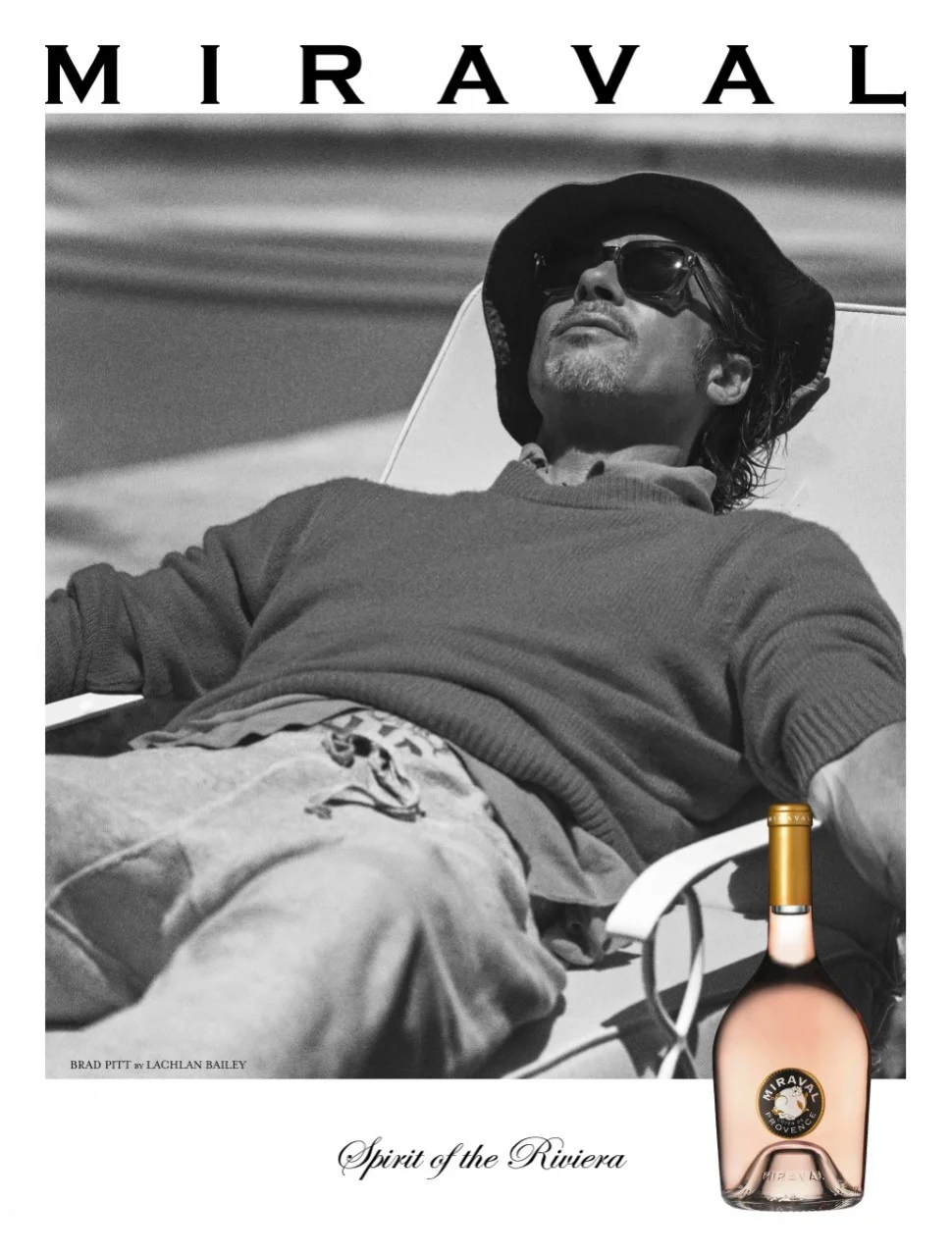
źródło: https://www.etonline.com/brad-pitt-is-the-face-of-rose-wine-in-new-ad-ca
Jak powstaje wino różowe?
Odmiany przeznaczone na wina różowe to klasyczne czerwone szczepy (takie jak: Grenache, Cabernet Sauvignon, Sangiovese, Syrah czy Pinot Noir). Moszcz (czyli wyciśnięty sok z czerwonych winogron) poddaje się maceracji wraz ze skórkami winogron przez bardzo krótki czas od 2 do 24 godzin, po to tylko aby nadać winu odcień różu (czasem pudrowego jak wina z Prowansji czy Kalifornii, czasem głębokiego niczym barwa magenta – wina australijskie). Kolor jest bezpośrednio wynikiem długości maceracji.
Swoją lekkość i minimalną nutę tanin zawdzięczają temu, że podczas procesu winifikacji nie mają kontaktu z dębową beczką. Choć dziś eksperymentuje się z winami różowymi i niektóre starzone są w beczkach np. wcześniej kilkukrotnie użytych, to nadaje winu inny wymiar.
Saignée w języku francuskim oznacza „krwawić”, saignée jest często produktem ubocznym produkcji czerwonego wina, a nie celowo produkowanym winem różowym. Dlatego wino produkowane tą metodą nie jest uważane za poważne wino różowe, jak to, które pochodzi z winogron i dedykowanych mu winnic.
Ta technika jest powszechna w regionach, w których winiarze dążą do produkcji skoncentrowanych, dużych, wyrazistych win czerwonych.
„Wykrwawienie” części wina ze zbiornika we wczesnym procesie maceracji daje większą koncentrację pozostałemu sokowi. Jaśniejszy sok, który się „wykrwawił”, jest winifikowany osobno jako wino różowe i to nadaje winu głębszy kolor.
Wino rosé saignée jest często doskonałej jakości i świetne do picia, ale trzeba mieć świadomość, że generalnie jest to wino bardziej komercyjne, z dużą ilością „słodyczy” (nie cukru, ale doznania), z mniejszą świeżością, dobre dla tych z was, którzy wolą bogatsze, bardziej owocowe wina różowe.

źródło: shutterstock.com
Różowe różowemu nierówne
Zrobić fenomenalne wino różowe jest sztuką. Istnieją winnice, które w swoim rozbudowanym portfolio mają jedno lub dwa wina różowe – poprawne, często w tzw. entry level części oferty. Ale istnieją też winnice, które produkują tylko jedno lub dwa wina, i są to tylko wina rosé jak np. prowansalski AIX, gdzie winnica dosłownie produkuje tylko jedno wino. Zarządzanie winnicą, moment zbiorów, sposób produkcji – wszystko jest przemyślane, aby otrzymać jak najlepsze wino różowe. Ja jestem zwolenniczką win różowych powstających w winnicy, to znaczy, gdzie pomysł na wino zaczyna się od winnych krzewów a kończy w winiarni.
Wino różowe w zależności od wielu czynników (odmiana, region i klimat, rocznik, czas maceracji) może mieć odcień od jaśniutkiego różu po mocny niczym fuksja. Pokutuje przekonanie, że to właśnie blade róże są gwarantem jakości i klasy. To nie jest do końca tak. Jakość, paletę wrażeń, ale i nudę można znaleźć zarówno wśród „bladych” jak i tych nasyconych różów. Nie kolor wyznacza wysoki poziom wina różowego! Należy zrozumieć, że tak jak w przypadku każdego innego stylu wina – białych, czerwonych, musujących – wino różowe może być proste, a może być też poważne, jakościowe, eleganckie.
Nie tylko na walentynki
Róż – czyli słodko, kobieco, romantycznie, wino na party przy basenie, różowy flaming, skąpe różowe bikini, no a poza letnim sezonem co najwyżej walentynki. Jak słyszę takie pytanie: „A jakie wino na kolację walentynkową, różowe prawda?” to odpowiadam pytaniem: „A co będziecie państwo na tę kolację jedli?”. Wino różowe jest wdzięczne do łączenia z jedzeniem.
Jeśli drogi czytelniku już biegniesz do najbliższego sklepu po rosé, aby przekonać się czy mam rację. To na chwilę cię zatrzymam.
Po pierwsze tak jak i w przypadku win białych i czerwonych, aby wino zabłysnęło z jedzeniem a i potrawa wspaniale się prezentowała na podniebieniu wymagany jest prawidłowy dobór wina, jego budowy, stylu, aromatów do tego co mamy na talerzu. Po drugie, niestety w Polsce wciąż większość supermarketowych win różowych w cenie poniżej 30 zł to są wina półsłodkie, półwytrawne, słodkie. Cukier to taki trochę mocniejszy makijaż. Jak w przypadku win czerwonych beczka, przykrywa każde niedociągnięcia (nie mówimy oczywiście o winach słodkich „królewskich” jak Tokaj czy Sauterns, które swoją słodycz oferują nam w objęciach perfekcyjnej kwasowości). Zatem trochę trzeba się na naszych rodzimych półkach naszukać. ale można znaleźć świetne rosé.

źródło: shutterstock.com
Idealny kompan posiłku
Wino różowe jest winem na cały rok, na każdą okazję, do wielu potraw. Wyzwaniem jest tylko wybór odpowiedniego. Wino różowe jest świetnym winem do stołu – od brunchu, przez piknik, grill, obiad, aż po wykwintną kolację fine diningową. Jest uniwersalne, jeśli chodzi o łączenie go z potrawami.
Daje aromaty odmian czerwonych, a jednak jest świeższe od nich. Przy dzisiejszych zmianach klimatycznych jest winem stanowiącym alternatywę dla wielu win czerwonych. Dziś wielu konsumentów poszukuje świeżości, a jednocześnie struktury w winie. Dobrze zrobione rosé jest świetną odpowiedzią na to zapotrzebowanie.
Poza tym warto podkreślić, że wino różowe to nie jest jakiś jeden rodzaj wina. Tak jak wspomniałam, odmiana winogron, region, styl produkcji determinują styl wina różowego. Zatem rosé może być lekkiej budowy lub dobrze zbudowane. Mocno wytrawne lub z wysokim cukrem resztkowym. Większość rosé powstaje w kadziach ze stali nierdzewnej, co przekłada się na wyeksponowanie świeżości aromatów. Ale zdarzają się rosé dojrzewające w dębie. Niektóre rosé mają tak dobrą strukturę, że z powodzeniem można je połączyć np. z wieprzowiną. Te o mocniej zaakcentowanej słodyczy, ale wciąż dobrej kwasowości sprawdzą się świetnie z potrawami pikantnymi, np. kuchni tajskiej. Jest bowiem tak, że smak słodki i ostry na naszym podniebieniu idealnie się równoważą.
Różowe można połączyć z niezliczoną liczbą składników: sery, sałatki, owoce morza, ryby, wieprzowina, drób – wszystko zależy od dobrania budowy i aromatów wina do potrawy, czyli rodzaju proteiny, obróbki termicznej, sosów, dodatków, przypraw. Ale ta zasada obowiązuje przy dobieraniu wina w dowolnym kolorze, różowe nie jest tu wyjątkiem. Jedynym wyzwaniem jest poszukiwanie win z winnic o doskonałych warunkach geologicznych i klimatycznych, dobrze zrobionych, eleganckich i pasujących do potraw z karty.
Na zakończenie chciałabym podkreślić jeszcze jeden aspekt dotyczący win rosé – i wiele winnic, zwłaszcza produkujących wina rosé premium już to rozumie – to fakt, że wino różowe jest synonimem stylu życia. Rosé jest ucieleśnieniem śródziemnomorskiego dolce vita, joie de vivre, biesiady, zabawy, radości, natury, jedzenia… Gdy do posiłku, czy to domowego, prostego, czy też fine diningowego zostaje odkorkowana butelka rosé znikają bariery, nikt nie zaprząta już sobie głowy tym, skąd to wino pochodzi, jaki jest jego rocznik, jaka była pogoda podczas zbiorów, ile dni było na skórkach etc. Liczy się, czy jest to dobre wino, przyjemne w odbiorze i harmonizujące z posiłkiem. Bo wino to w mojej opinii jest nieodzowny składnik stołu obok oliwy, sera, chleba, morskiej soli…
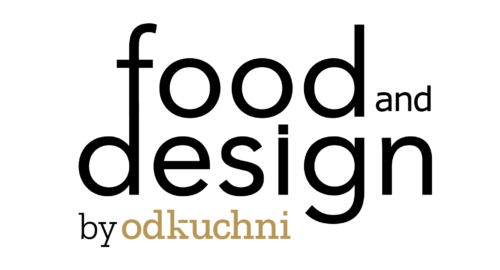
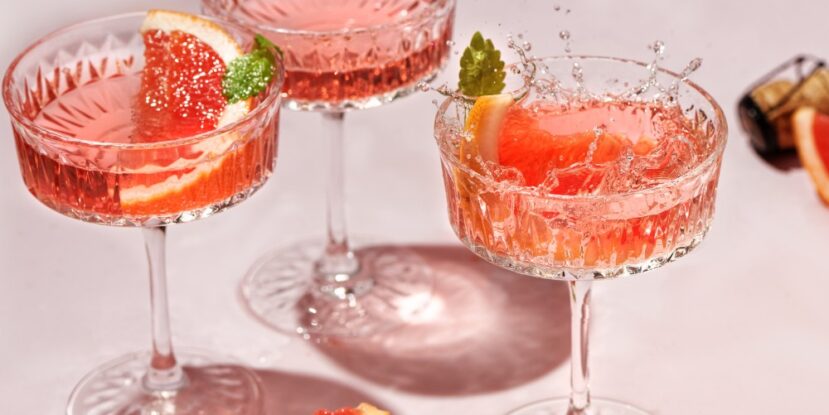
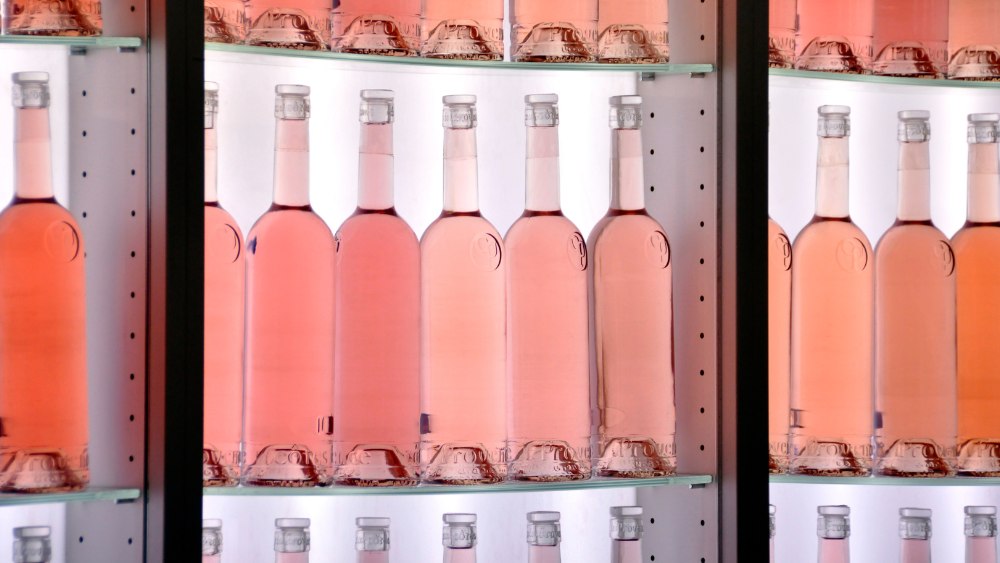 źródło: shutterstock.com
źródło: shutterstock.com

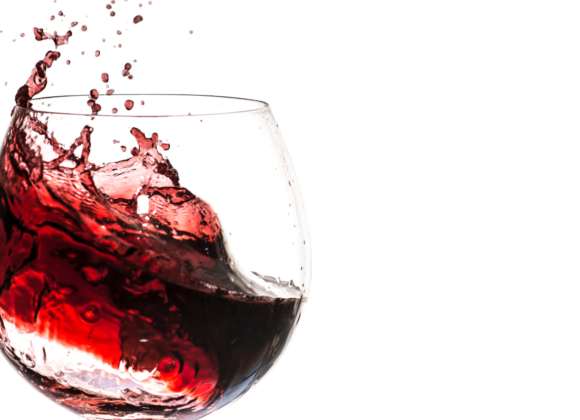
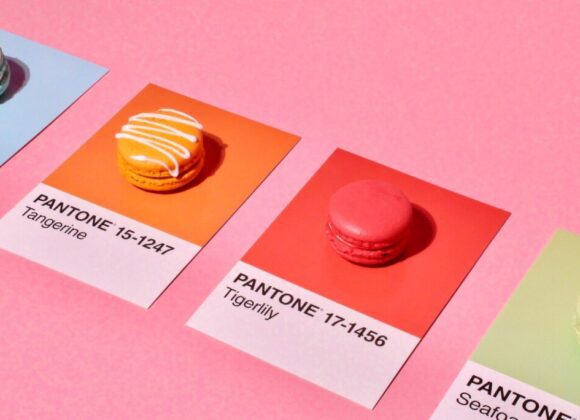
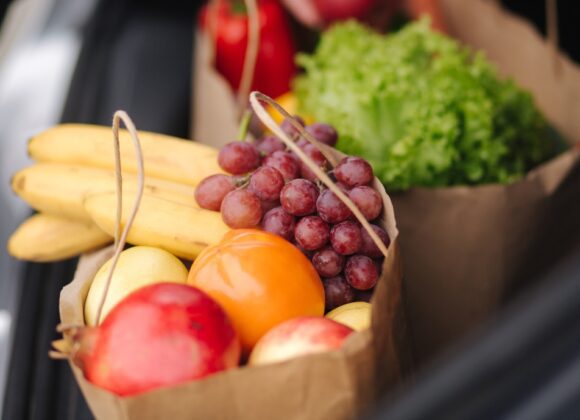



 Młodszy specjalista ds. komunikacji marketingowej i PR.
Młodszy specjalista ds. komunikacji marketingowej i PR.


 Absolwent Uniwersytetu Warszawskiego oraz Szkoły Głównej Gospodarstwa Wiejskiego. W branży HoReCa od ponad 10 lat. Przez lata związany z Grupą Trip, Sobienie Królewskie Golf and Country Club oraz restauracją Florentin w Warszawe.
Absolwent Uniwersytetu Warszawskiego oraz Szkoły Głównej Gospodarstwa Wiejskiego. W branży HoReCa od ponad 10 lat. Przez lata związany z Grupą Trip, Sobienie Królewskie Golf and Country Club oraz restauracją Florentin w Warszawe. Absolwentka Wydziału Architektury Politechniki Warszawskiej na kierunku Architecture for Society of Knowledge oraz Komunikacji Wizualnej na Politecnico di Milano. Specjalistka od budowania nastroju. Doświadczenie zdobywała w kraju i zagranicą podczas licznych warsztatów międzynarodowych (Sevilla, Lizbona, Florencja), stypendium na La Sapienza (Rzym) oraz pracując m.in. w Carmi e Ubertis i ADM Milano.
Absolwentka Wydziału Architektury Politechniki Warszawskiej na kierunku Architecture for Society of Knowledge oraz Komunikacji Wizualnej na Politecnico di Milano. Specjalistka od budowania nastroju. Doświadczenie zdobywała w kraju i zagranicą podczas licznych warsztatów międzynarodowych (Sevilla, Lizbona, Florencja), stypendium na La Sapienza (Rzym) oraz pracując m.in. w Carmi e Ubertis i ADM Milano.








 Menedżer z wieloletnim doświadczeniem w branżach kosmetycznej, spożywczej, dziecięcej. W trakcie swojej kariery związany z firmami takimi jak: L’Oreal, Samsung, Danone-Nutricia, Unilever. W ciągu swojego życia zawodowego odpowiadał między innymi za rozwój sprzedaży i contentu eCommerce w Polsce i krajach Europy Środkowo-Wschodniej.
Menedżer z wieloletnim doświadczeniem w branżach kosmetycznej, spożywczej, dziecięcej. W trakcie swojej kariery związany z firmami takimi jak: L’Oreal, Samsung, Danone-Nutricia, Unilever. W ciągu swojego życia zawodowego odpowiadał między innymi za rozwój sprzedaży i contentu eCommerce w Polsce i krajach Europy Środkowo-Wschodniej. 

























































